
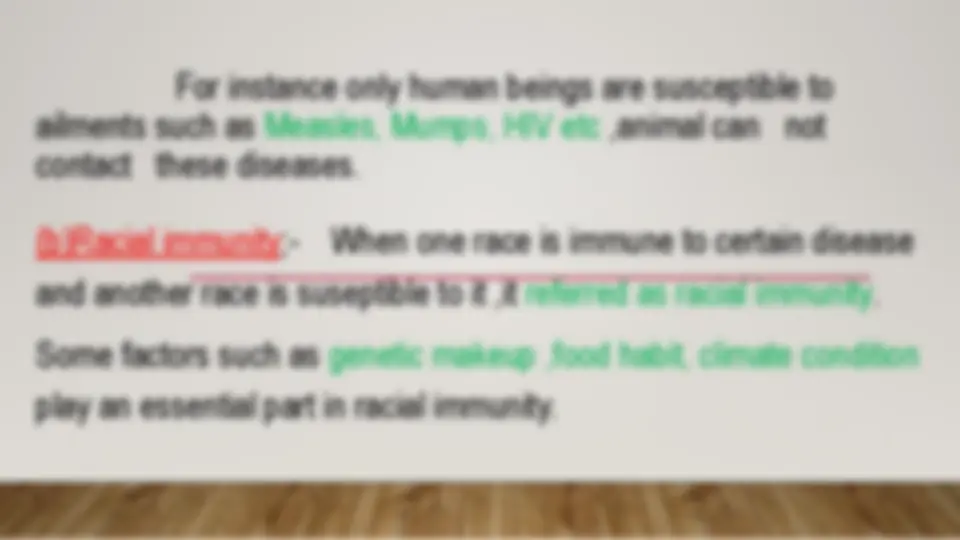
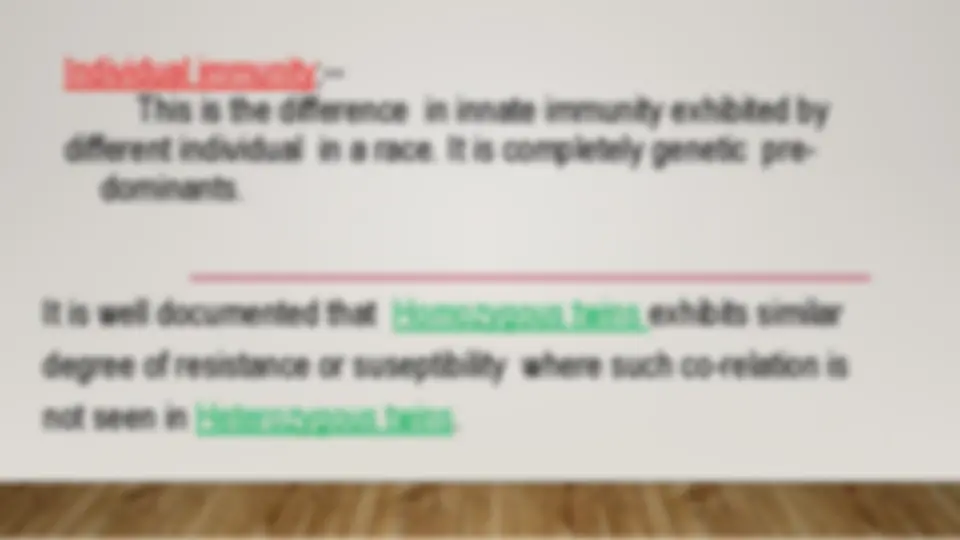
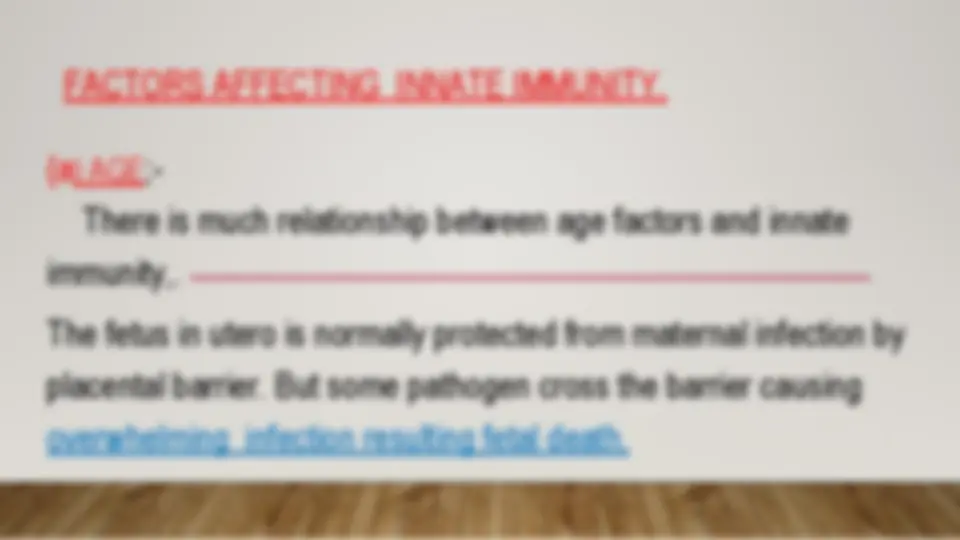
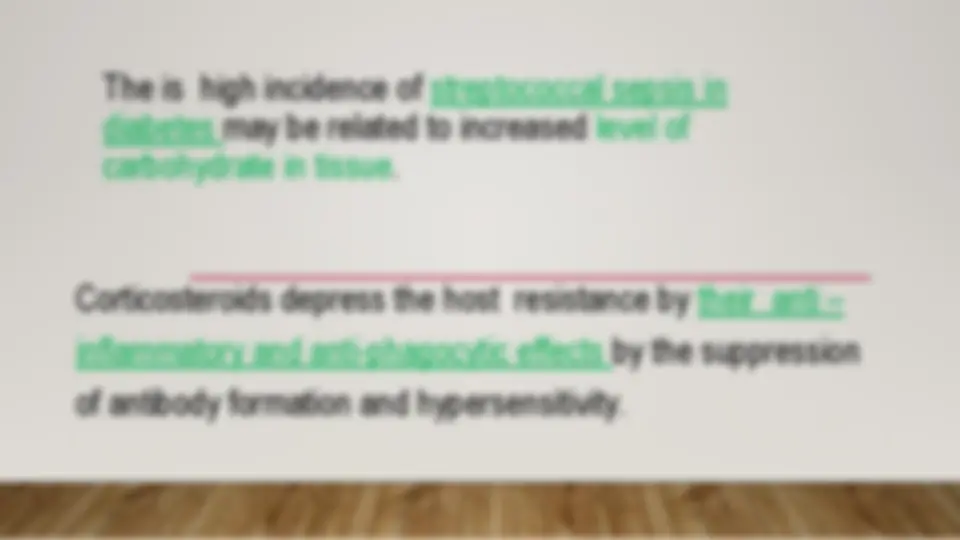
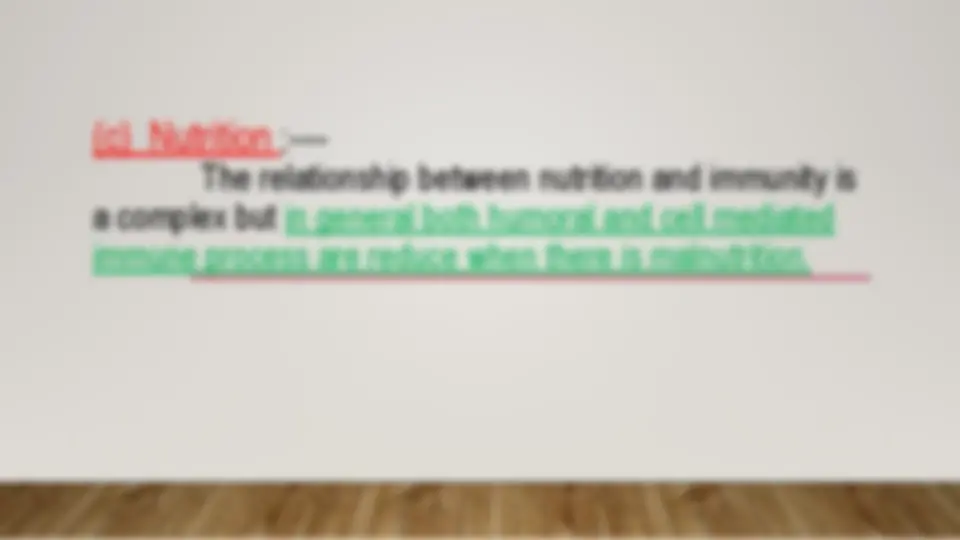
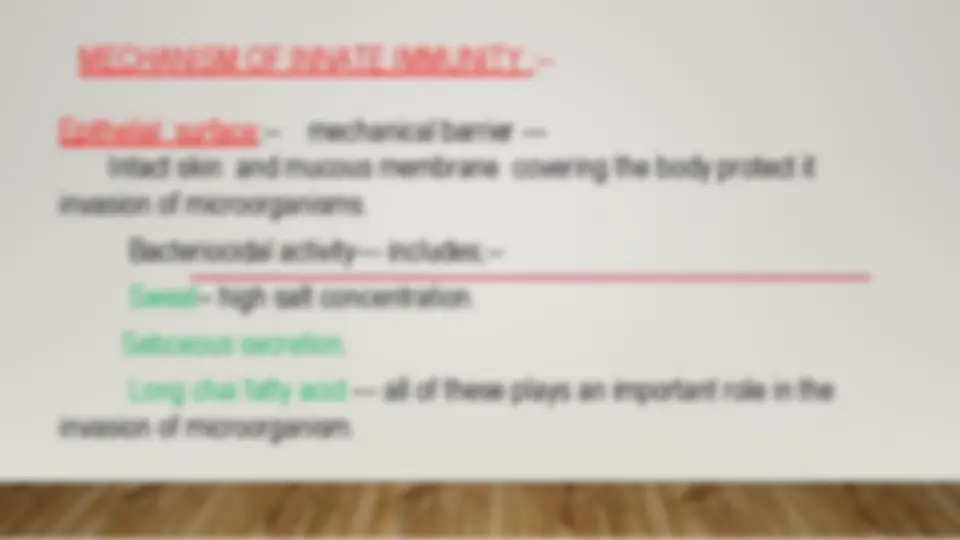
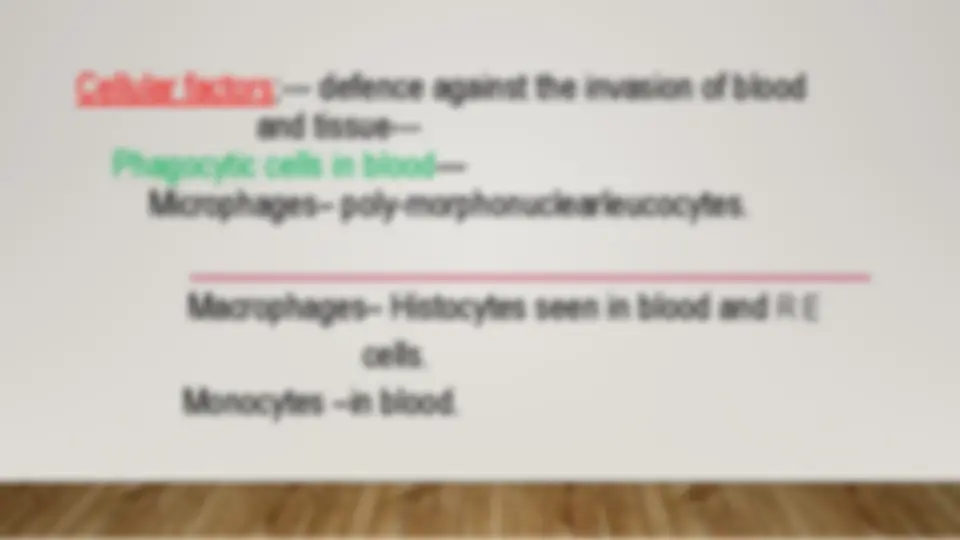
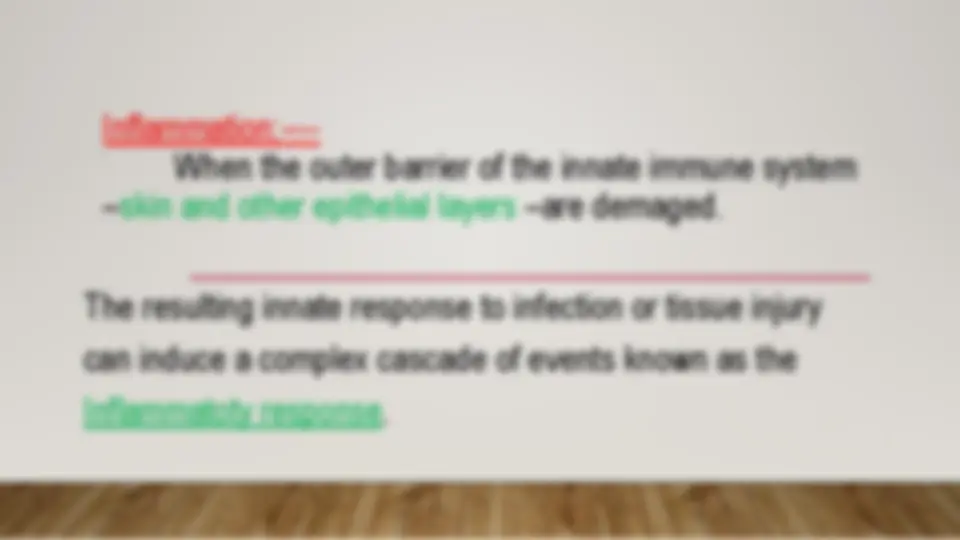
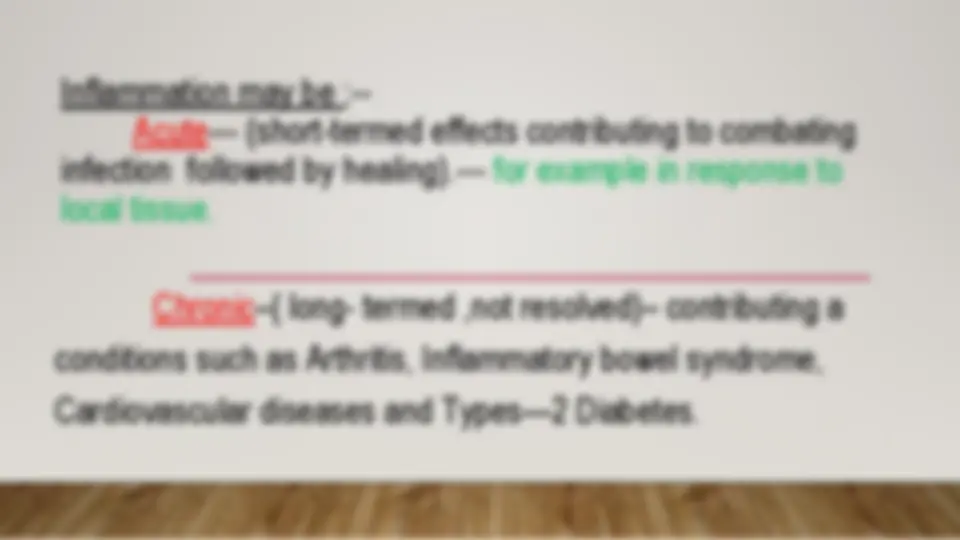
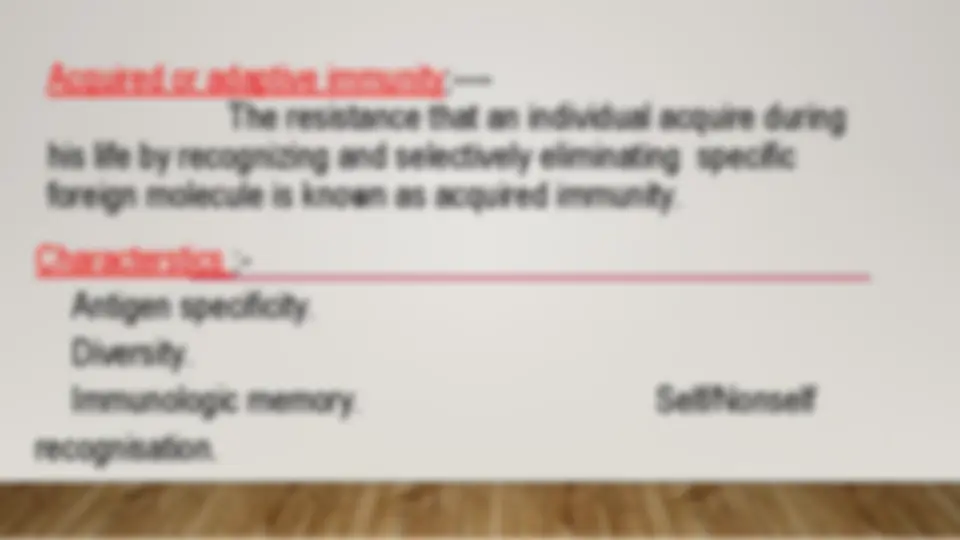
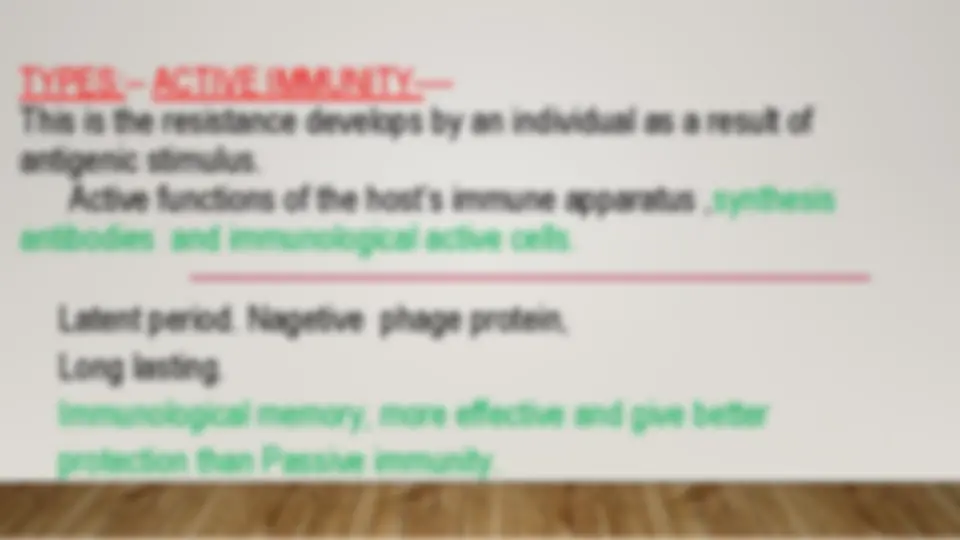
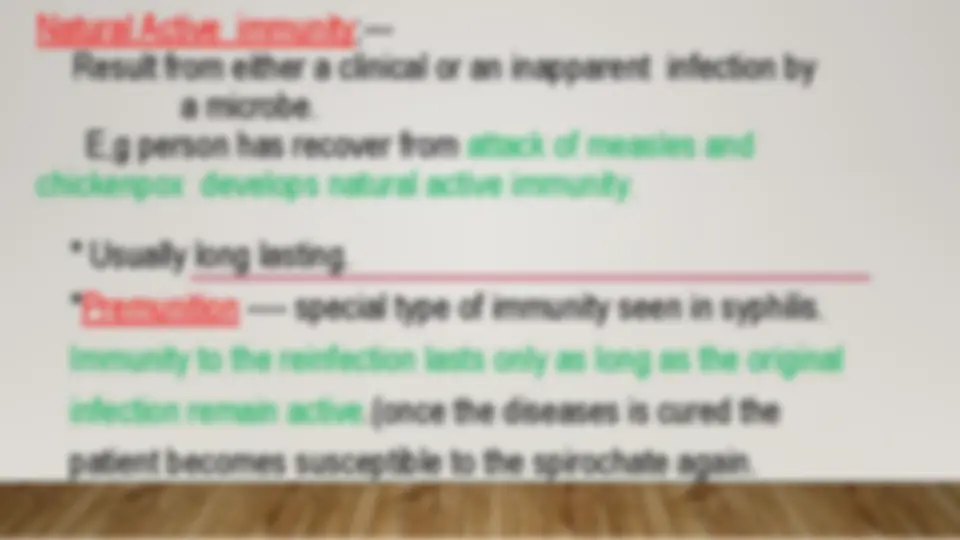
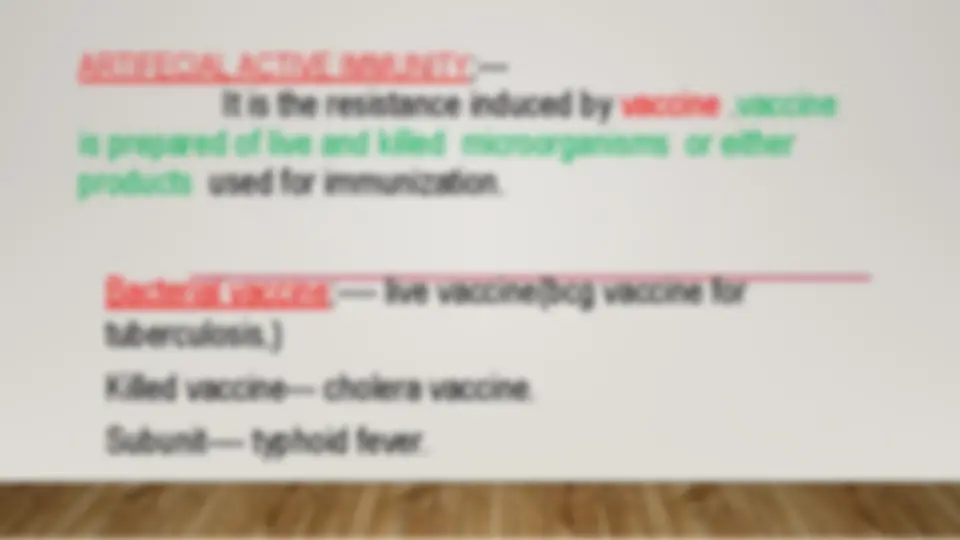
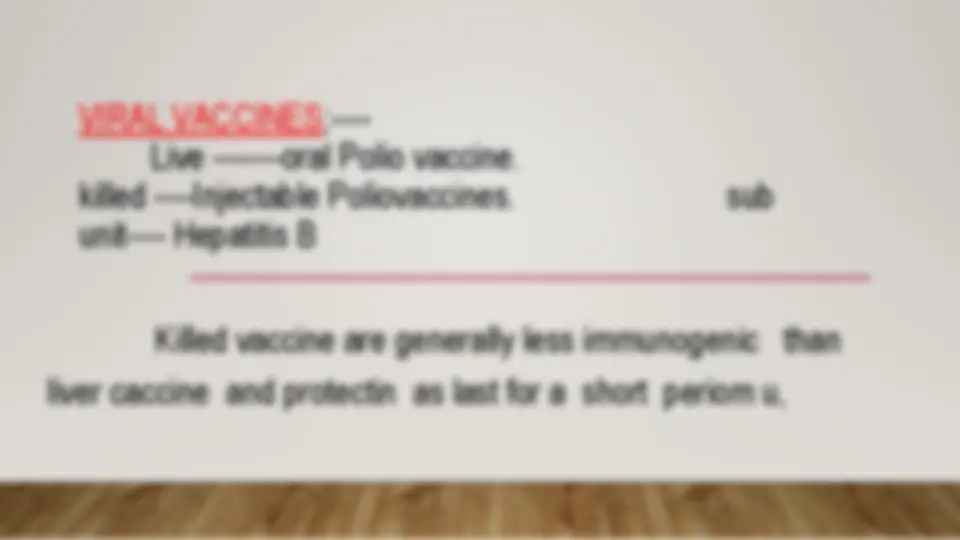
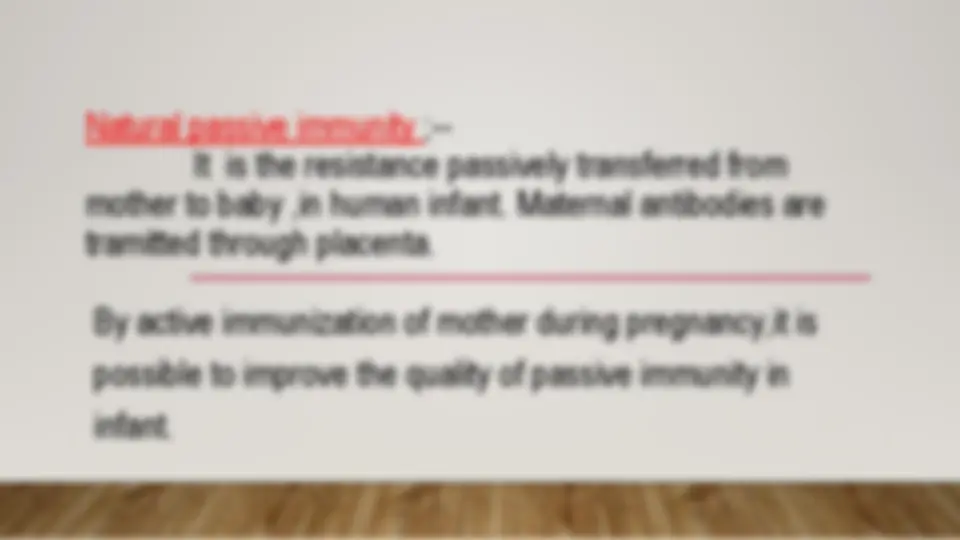
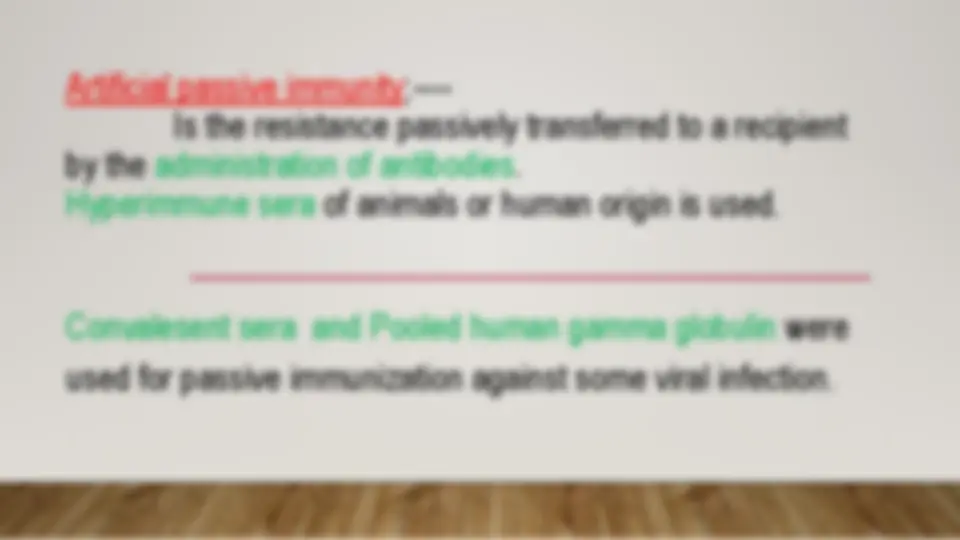
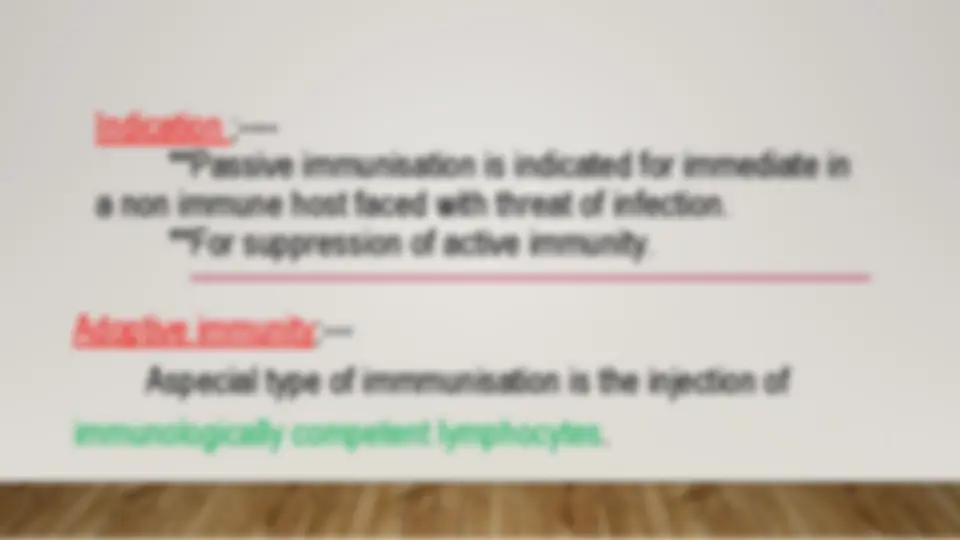
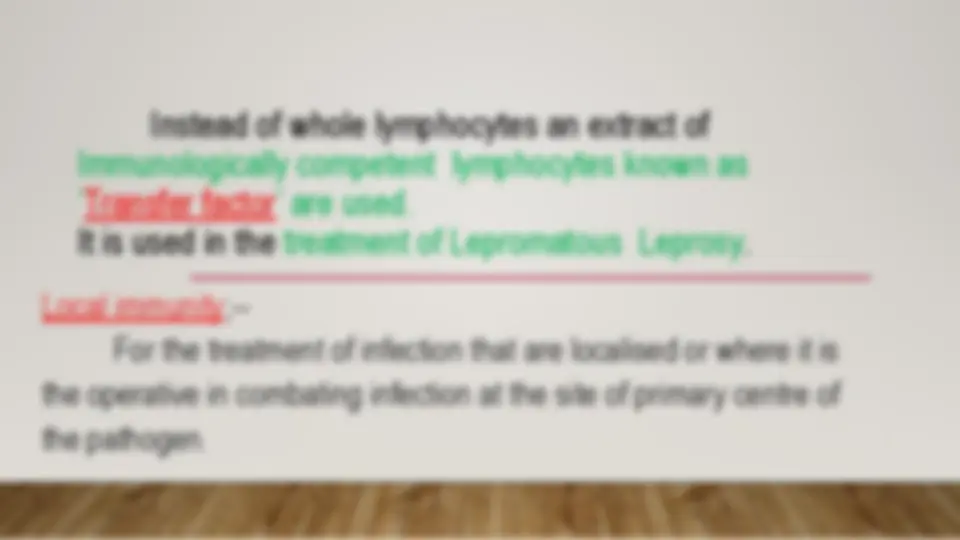
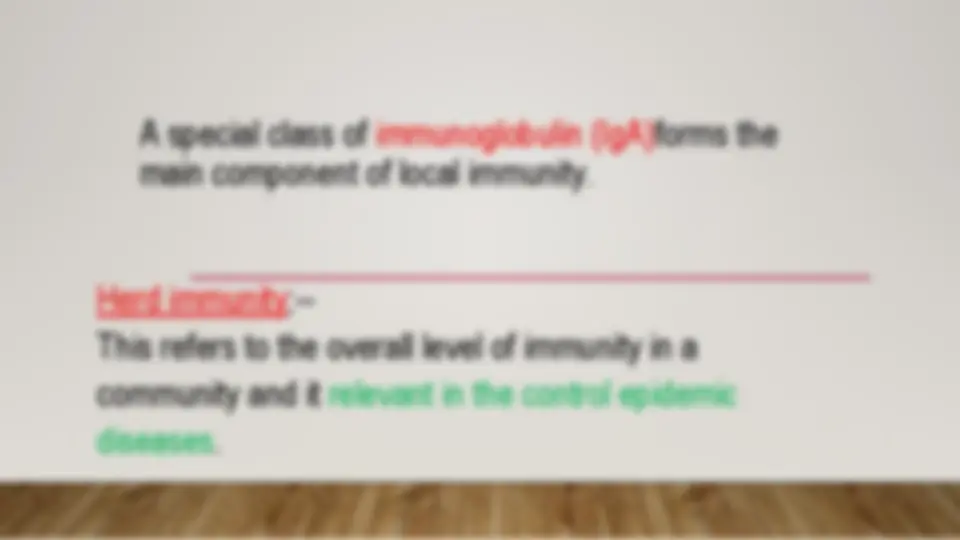
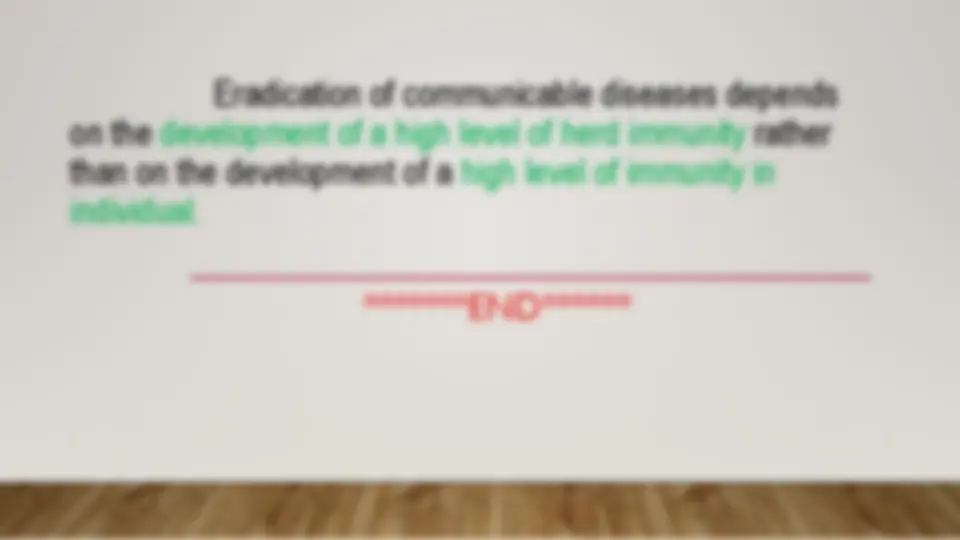


Study with the several resources on Docsity

Earn points by helping other students or get them with a premium plan


Prepare for your exams
Study with the several resources on Docsity

Earn points to download
Earn points by helping other students or get them with a premium plan
Community
Ask the community for help and clear up your study doubts
Discover the best universities in your country according to Docsity users
Free resources
Download our free guides on studying techniques, anxiety management strategies, and thesis advice from Docsity tutors
PARUL UNIVERSITY IMPORTANT NOTES FOR EXAM
Typology: Slides
1 / 28

This page cannot be seen from the preview
Don't miss anything!





















host towards injury caused by microorganisms and their products,
as it i protect us from diseases it is called disease resistant.
Lack of resistance is known as susceptibility.
Immunity is done by immune system which is a complex network
of lymphoid organs as bone marrow, thymus, spleen,etc.
TYPES ---- Immunity against infectious diseseses is mainly of two types,--- (a) Innate immunity. and (b)Acquired immunity.
(1)Innate immunity. Confer immunity to non-specific and specific – which may be species, racial and individual
(a) Species immunity;--- when a diseases attacks a species only and another species is entirely immune to it is known as species immunity.
Individual immunity;-- This is the difference in innate immunity exhibited by different individual in a race. It is completely genetic pre- dominants.
It is well documented that Homozygous twins exhibits similar
degree of resistance or suseptibility where such co-relation is
not seen in Heterozygous twins.
(a) AGE;-
There is much relationship between age factors and innate
immunity,.
The fetus in utero is normally protected from maternal infection by
placental barrier. But some pathogen cross the barrier causing
overwhelming infection resulting fetal death.
Older persons are highly susceptible to infection due to waning of their immune response and other infirmities like enlarged prostate leading to urinary stasis.
(b) Hormonal influence;----- Endocrine
disorders such as Diabetes Mellitus , Hypothyroidism and
Adrenal dysfunctions are associated with enhance
susceptibility to infection.
The is high incidence of streptococcal sepsis in diabetes may be related to increased level of carbohydrate in tissue.
Corticosteroids depress the host resistance by their anti –
inflammatory and anti-phagocytic effects by the suppression
of antibody formation and hypersensitivity.
MECHANISM OF INNATE IMMUNITY ;--
Epithelial surface;-- mechanical barrier --- Intact skin and mucous membrane covering the body protect it invasion of microorganisms.
Bacteriocidal activity--- includes;-- Sweat– high salt concentration. Sebceous secretion. Long chai fatty acid --- all of these plays an important role in the invasion of microorganism.
Mucosa;--- Respiratoty tract;--- Architecture of nose prevent entry of microorganism. Mucous lining epithelium --- shallow and cough reflex. Cilia of respiratory tract.
Secretion---- contain mucopolysaccharides capable of combining with influenza and certain virus.
Cellular factors;--- defence against the invasion of blood and tissue--- Phagocytic cells in blood— Microphages– poly-morphonuclearleucocytes.
Macrophages– Histocytes seen in blood and R E cells. Monocytes –in blood.
Inflammation;---- When the outer barrier of the innate immune system –skin and other epithelial layers –are demaged.
The resulting innate response to infection or tissue injury
can induce a complex cascade of events known as the
Inflammatoty response.
Acute phage protein--- Infection and injury leads to sudden rise in plasma concentration of proteins –collectively known as Acute phage proteins.
This includes –Creactive protein, (CRP), Mannose binding
protein, Alfa -1- Acid Glycoprotein, Serum Amyloid p
component.
CRP and other protein activate alternative pathway of
Complements system.
Toll-like receptors (TLR);-- Are a class of protein that play a keyrole in innate immunity usually express on sentinel cells such as macrophage and dendritic cells.
There are 13 different Types of TLRs that recognised
the pathogen and enhance phagocytosis and leads to
inflammation at the site.
This is the resistance develops by an individual as a result of antigenic stimulus. Active functions of the host’s immune apparatus ,synthesis antibodies and immunological active cells.
Latent period. Nagetive phage protein, Long lasting. Immunological memory, more effective and give better protection than Passive immunity.
Natural Active immunity;--- Result from either a clinical or an inapparent infection by a microbe. E,g person has recover from attack of measles and chickenpox develops natural active immunity.